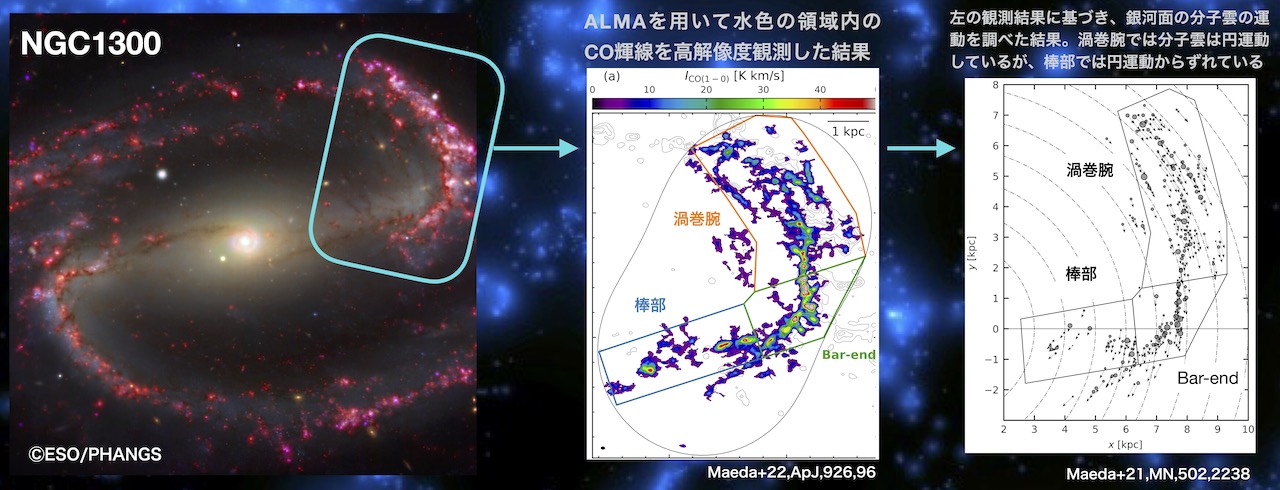Tsukuba Uchu Forum
132nd Uchu Forum
Star Formation Activity in Barred Spiral Galaxies Probed by Molecular Gas Observations
Fumiya Maeda
Institute of Astronomy, The University of Tokyo
Abstract
Star formation activity in disk galaxies is known to depend on the structure of the galaxy (e.g., center, arms, bars, etc.). The dependence is particularly pronounced in barred spiral galaxies, where active star formation is observed in the arms, while star formation is weak (low star formation rate) in the bars. In some cases, very active star formation is observed at the bar end, which is the junction of the arm and bar, and at the center of the galaxy. In order to understand star formation in galaxies, it is important to clarify what causes this difference in star formation activity between structures within a galaxy. Since stars are born from molecular gas, it is essential to first understand how the relationship between molecular gas and star formation depends on the structure of the galaxy. In this talk, I will first present a statistical study of the star formation efficiency (star formation rate per unit molecular gas mass) for nearby barred spiral galaxies by structure. This study reveals that the star formation efficiency in the bar is systematically lower than in the arm and bar end. This result suggests that the star formation rate is not smaller in the bar due to the lack of molecular gas, the material for stars, but rather that star formation is suppressed despite the presence of the material. We have further investigated the properties of the molecular gas from the giant molecular cloud scale (~50 pc) to the kpc scale using ALMA and Nobeyama 45m for the nearby barred spiral galaxy NGC 1300 in order to clarify the cause of this suppression of star formation activity. In the second half of the talk, I will present the results of that series of studies, discuss the physical mechanism of suppression, and discuss future prospects.


 和 英
和 英